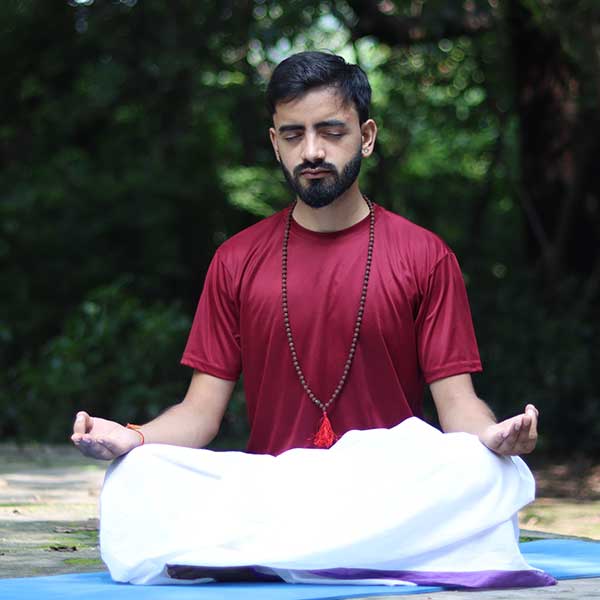
Yoga Philosophy
Understanding Yoga Philosophy
Yoga is not only about those exercises and flexibility; it is a complete system that makes it a mission to unite body, mind, and soul. Yoga originates from the Indian subcontinent, and its philosophy contains many principles that are still relevant today regarding how one ought to live a proper life. It includes a moral code, self-control, spirituality, and individualism.
Yoga isn’t only a practice and comes with a rich philosophy, wherein the realization of each person’s individuality is one of the significant principles.
Ancient Roots in India
Yoga is one of the holistic practices rooted in India with its history going back more than five thousand years. This hymn is first recorded in the books of the earliest written literature of Indians, the Vedas, in the Rig Veda. Some of these early scriptures provided the groundwork for religious philosophies that were to mature into what is modern yoga.
Evolution Over Centuries
Over the years, yoga philosophy was developed and expanded by many works, including the Upanishads and the Bhagavad Gita. The Yoga Sutras of Patanjali, a text written around 400 CE, became the foundation of yoga philosophy and practice, including the Eight Limbs of Yoga, which are guidelines in the areas of practical ethics, meditation, and liberation.
The Key Principles of Yoga Philosophy
In the world of Yoga, there are four guidelines. The most important concepts for yoga philosophy are the Yamas and Niyamas, which are guidelines for proper behavior.
The Yamas (Ethical Guidelines)
The Yamas respect guidelines on how to be and handle social interactions with the environment.
Ahimsa (Non-violence)
Ahimsa covers any action and inaction as well as thoughts and words, which should be tender. This principle helps embrace non-violence and avoidance of harm to others as well as oneself.
Satya (Truthfulness)
Satya stresses integrity of word and message and genuine living. It is the ability to tell the truth without causing harm and to be honest without being overbearing.
The Niyamas (Personal Observances)
The Niyamas deal with one’s conduct and directly benefit the individual.
Saucha (Purity)
Saucha emphasizes the cleansing of the body and spirit, maintaining purity of both mind and body through cleansing processes and practices.
Santosha (Contentment)
Santosha fosters acceptance and gratitude for one’s existence, promoting contentment with what is available, contrary to seeking constant external validation.
The Eight Limbs of Yoga
Yoga has been found to be an effective approach toward achieving spiritual goals and Self-realization. Patanjali’s Eight Limbs of Yoga is a road map towards achieving this goal.
Asana (Physical Postures)
Postures reflect the bodily positions adopted in most styles of today’s practice of yoga. They help prepare the body for meditation exercise.
Pranayama (Breath Control)
Pranayama is a technique of breath control. It helps achieve relaxation and enhances life energy or ‘prana’.
Dharana (Concentration)
Dharana means concentration and directs attention towards one point, which is helpful in higher stages of meditation.
Samadhi (Enlightenment)
Samadhi is the state in which the practitioner becomes one with the universe or divine.
The Use of Yoga in Managing the Mind-Body Relationship
Yoga philosophy stresses harmonizing the body and the mind. Through bodily movements and breath control, yoga strengthens the correlation between body and mind, promoting overall well-being.
Ways Through Which Yoga Philosophy Has Impacted Contemporary Practice
Yoga Beyond Physical Fitness
Though many classify yoga as exercise, its principles encourage looking beyond the physical. Yoga unites body and soul for the individual’s all-around well-being.
Meditation and Mindfulness
Meditation and mindfulness are essential components of modern yoga therapies. They contribute to inner peace, reduce stress levels, and improve mental clarity.
The Spiritual Aspect of Yoga
The Upanishads discuss the concept of Atman (self) and Brahman (universe). Yoga aims to connect the individual self (Atman) with the universal self (Brahman), resulting in spiritual evolution.
The Concept of Moksha
Moksha refers to liberation from the cycle of reincarnation, union with the divine, and ultimate salvation. Karma (laws of action) and Dharma (principles of righteousness) are key aspects guiding individuals toward spiritual success.
Incorporating Yoga Philosophy into Daily Life
Yoga philosophy can be applied through Yamas and Niyamas, such as practicing non-violence (Ahimsa) and embracing contentment (Santosha). Developing a personal yoga practice involving postures, pranayama, and meditation is a practical approach to physical and spiritual balance.
Conclusion
Yoga philosophy offers many concepts for a balanced way of life, guiding individuals in aspects of ethical behavior, spiritual practice, and self-help. Its teachings remain essential for personal development and well-being.





Leave a Comment